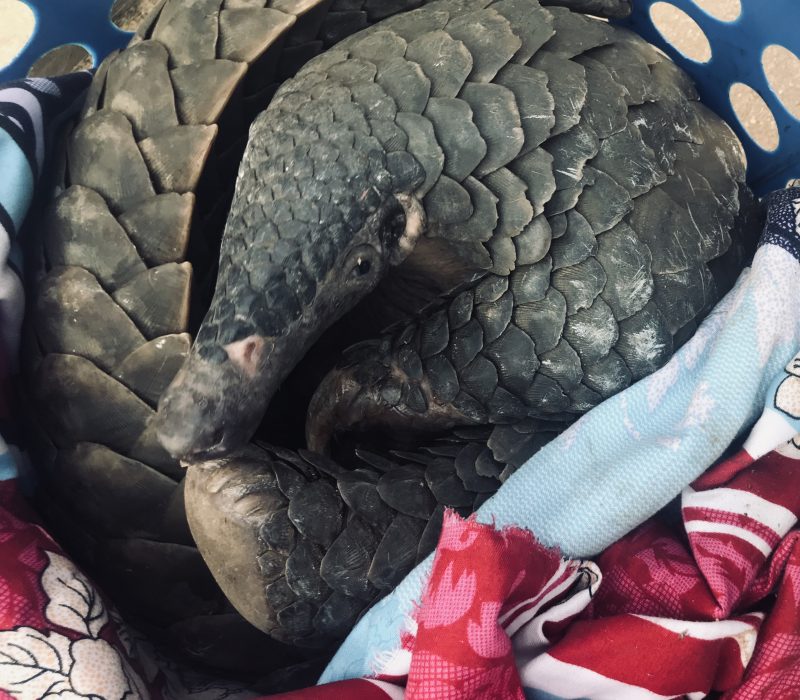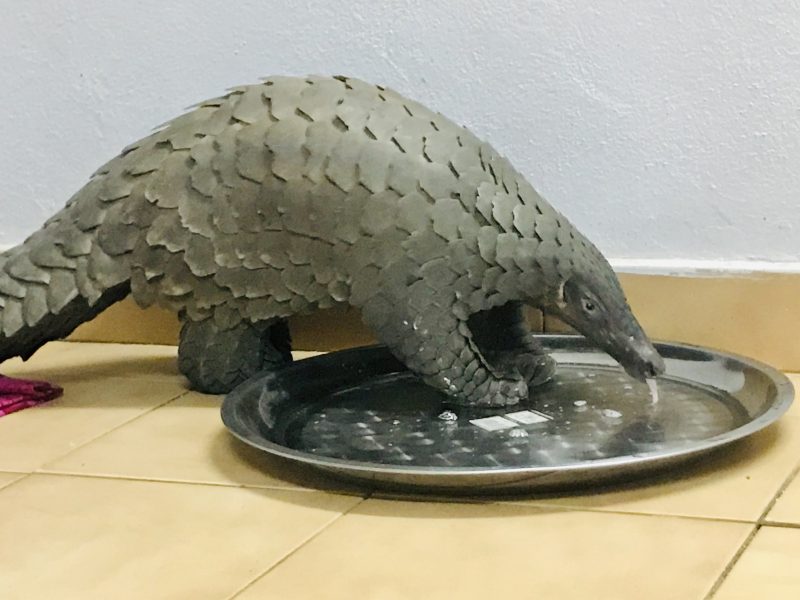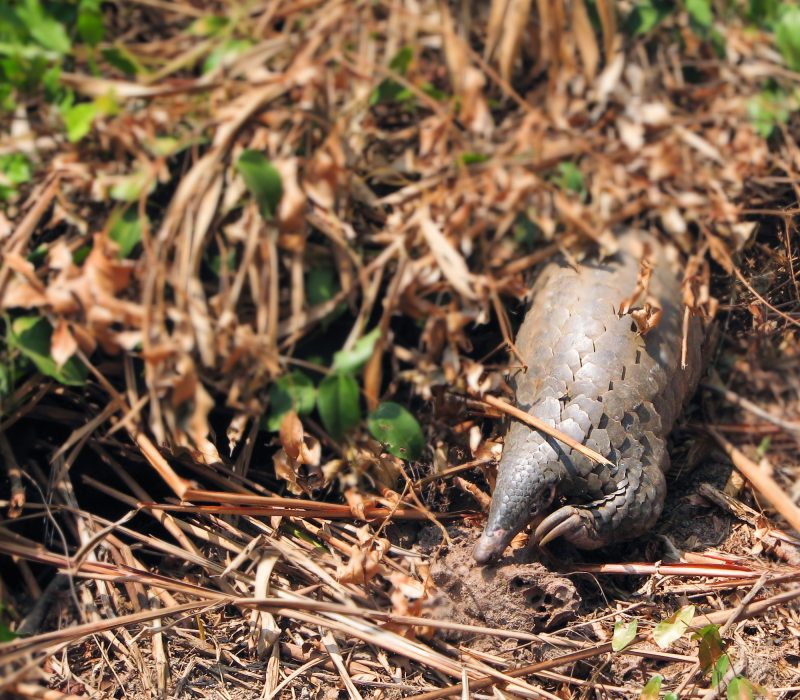Rare giant pangolin rescue in Congo
A giant pangolin, the world’s most trafficked scaled mammal, was rescued and later cared for by our teams. Thanks to the collaboration between experienced pangolins carers from our Wildlife Health program teams in Congo, the Tikki Hywood Foundation and the Sangha Pangolin Project in Central African Republic, this species highly sensitive to stress, and generally dying a few hours or days from capture, was for once successfully reintroduced in the Nouabale-Ndoki National Park.

On 25th January, 2020, an unexpected call reached WCS teams based in the town of Ouesso in Northern Congo – a giant pangolin seized from poachers needs help. Dr Alain, veterinarian for the Wildlife Health Program was on mission and could not be reached. An unexpected and delicate task awaited our technical advisor now in charge in caring for the animal. Indeed, these insectivorous and nocturnal mammals tend not to survive well in captivity. Feeding exclusively on termites and wild ants, pangolins suffer a lot from stress and dehydrate very quickly often leading to their rapid death following capture. The confiscated female had already survived two weeks of poacher’s confinement, which was already a miracle.
”Keep her hydrated and release her as soon as possible.
Keeping a giant pangolin weighing 18kg and measuring 110cm in length for a whole night required a collective effort and perfect collaboration between the WCS teams and the experts from the Tikki Hywood Foundation, who guided her over the phone. The advice was simple: “keep her hydrated and release her as soon as possible.” The pangolin, curled up into a ball at the bottom of a large plastic laundry basket – had been found with a jute bag stuck in her scales. At first non-moving, the mammal quickly crawl out of the basket only to find the closest dark corner under a palm tree to hide. « Incredibly determined to be leaving, she was moving fast and steady, looking for a way to get away.”,told the team. Gently, our newly appointed pangolin carer led her into an empty room, trying all the way to help her get rid of the plastic filaments tangled in her scales before providing her with a long awaited for water bowl. Once done, the days new mascot finally fell asleep.

In the middle of the night, our teams are awakened by the housekeeper: the pangolin is trying to run away! Trying to break out of the room, the determined pangolin is climbing up a desk to reach the window and tear off the mosquito net, leaning against the louvered panes that were breaking under her weight, spilling broken glass before the team could reach out to her. Chances of survival in an urban center are not high for a giant pangolin roaming alone. Curled up in a defensive position, the pangolin is finally picked up and brought back to her temporary bed.
”Incredibly determined to be leaving, she was moving fast and steady, looking for a way to get away.
At first light of the morning, it is finally time to start the journey towards freedom. The scaly anteater is transported by car for four long hours, all the way to the edge of the Nouabalé-Ndoki National Park, a jewel of wilderness at the northern end of the Republic of Congo. On arrival, she is directly examined by Dr. Alain who was finally informed and could join with the team. Upon examination, it is determined this is in fact a juvenile female giant pangolin. Despite a slight injury on her left leg, she is still shockingly healthy for an animal held captive for so many days. Time has now come to rejoin the forest.
Once on the ground, the animal seems to take a few seconds to get her bearings. That’s it, she’s free! Ignoring the termite mound offered to her, the female heads directly towards the shade of the leaves and their safety. Hearing her rustling around and seeing her through the undergrowth, the team decides to leave her in peace, and leaves the termite mount in place so that she can come back and feed easily once she is alone.

The release is a success. Thanks to the determination of a dedicated many, from drivers, to veterinarian and pangolin experts, to project managers and technical advisors, and to the incredible coordination between these actors, this female is now back in her habitat and in a protected area hopefully ensuring her survival to adulthood if the rule of life and nature allows.
This female pangolin only survived thanks to her determination and strength. Most illegally traded wild mammals on the planet, pangolins are poached for their meat and their scales. Its is estimated that more than a million pangolins have been snatched from the wild in the past decade. In 2016, the 186 countries party to the Convention on International Trade in Endangered Species (CITES), the treaty that regulates the international wildlife trade, voted to ban the commercial trade in pangolins.


Mona Loo
Are there any living pangolins existing outside the Congo or on another continent other than Africa?